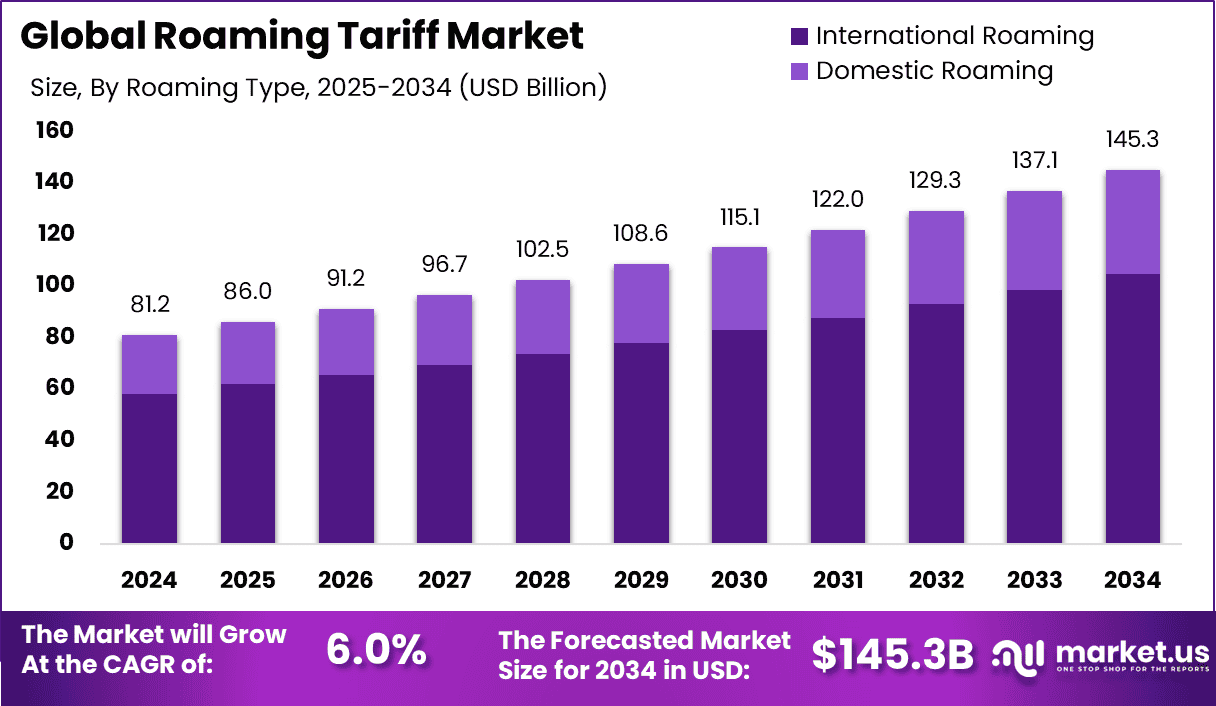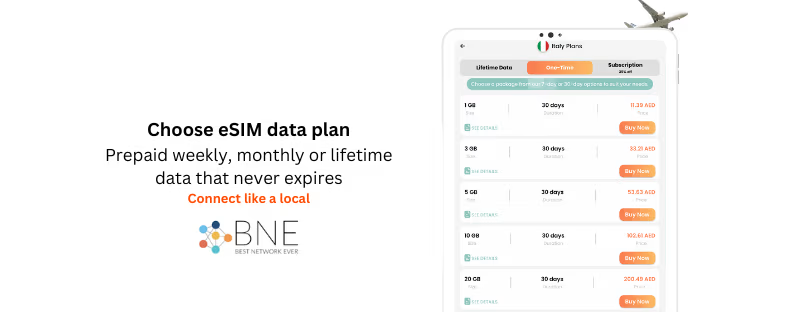
Global Roaming Tariff Market to Hit $145.3 Billion by 2034
The global roaming tariff market refers to the total revenue generated by telecommunications companies from international mobile services used by subscribers while traveling outside their home country. These services include voice calls, text messaging (SMS), and data usage, charged at specific rates known as roaming tariffs.
Roaming tariffs play a critical role in how mobile operators generate income from international travelers, businesses, and enterprise clients who rely on seamless mobile connectivity across borders. These tariffs are influenced by multiple factors—regulatory policies, international agreements between telecom operators, data consumption trends, and global infrastructure investments, particularly in 5G.
In recent years, the market has experienced strong momentum, driven by the exponential rise in mobile data usage, the rollout of 5G technology, and increasing global demand for uninterrupted international communication. However, it also faces challenges from tariff-related trade tensions, supply chain disruptions, and evolving regulatory frameworks.
The Market.us report provides a comprehensive outlook on the market’s projected growth from US$ 81.2 billion in 2024 to US$ 145.3 billion by 2034, identifying regional trends, tariff impacts, and strategic opportunities for telecom providers worldwide.

How Tariffs are Impacting the Economy
Tariffs have a profound impact on the global economy, particularly in the telecom sector, where mobile network infrastructure and services are heavily dependent on cross-border supply chains. In 2024, increased tariffs on telecommunications equipment such as smartphones, network components, and satellite communication systems have elevated operational costs for telecom providers. This is particularly felt in markets like the U.S., where tariffs on Chinese-made telecom equipment have led to higher costs for network expansions and device manufacturing.
These additional costs are often passed on to consumers, leading to higher roaming charges, which directly impact both individuals and businesses engaged in international communication. Tariffs also create disruptions in global supply chains, causing delays in the deployment of new roaming services and 5G infrastructure. The increased costs and uncertainties related to tariffs are pushing telecom operators to adjust pricing models, which could affect the competitiveness of roaming tariffs globally.

Impact on Global Businesses
Rising Costs & Supply Chain Shifts
Tariffs are raising costs for telecommunications companies, which rely on imported hardware, software, and network infrastructure. The price hikes on components such as mobile phones, routers, and network gear are pushing businesses to adjust their pricing structures. Consequently, roaming tariffs are being adjusted, leading to higher charges for international mobile services. Additionally, supply chain shifts are forcing companies to relocate production and procurement activities, reducing reliance on higher-tariff regions such as China.
Sector-Specific Impacts
The telecommunications sector, particularly roaming services, faces the brunt of tariff impacts. Increased tariffs on mobile network equipment result in higher operational costs for service providers. Additionally, businesses in the travel and hospitality sectors, which rely on telecom services for communication, face higher roaming charges, leading to increased operational expenses and reduced consumer satisfaction.
Strategies for Businesses
To mitigate the adverse effects of tariffs, businesses can adopt the following strategies:
- Supplier Diversification: Sourcing network components from regions with lower tariffs.
- Cost Optimization: Implementing operational efficiencies to absorb tariff-induced price hikes.
- Technology Upgrades: Leveraging next-gen technologies such as 5G to increase service efficiency and reduce long-term costs.
- Regional Expansion: Focusing on regions with favorable tariff policies to lower cost burdens.
- Price Adjustment: Gradually increasing roaming charges while maintaining competitive value propositions.
Regional Analysis
Europe is leading the global roaming tariff market, with a dominant market share of 32% and a revenue of US$ 25.98 billion in 2024. Germany plays a crucial role, with roaming services valued at US$ 6.49 billion, growing at a 4.7% CAGR. North America follows closely, benefiting from strong infrastructure and high consumer demand for seamless international roaming. The Asia-Pacific region is expected to see robust growth due to increased mobile data usage, particularly in countries like China and India. Latin America and the Middle East are gradually catching up, driven by the rising mobile user base and demand for affordable international communication services.
Business Opportunities
The global roaming tariff market presents several opportunities for businesses:
- 5G Roaming Services: With the expansion of 5G networks, telecom providers can offer high-speed roaming services to attract global consumers.
- Enterprise Roaming Solutions: Businesses with multinational operations need tailored roaming solutions, presenting opportunities for telecom companies to offer cost-effective, customized packages.
- Smartphone and Device Roaming: The rise of connected devices and the Internet of Things (IoT) creates new opportunities for device-specific roaming tariffs.
- Travel & Tourism Industry: Growing international tourism presents a lucrative opportunity for telecom companies to cater to frequent travelers with competitive roaming packages.
Conclusion: Navigating the Next Decade of Roaming Economics
The global roaming tariff market is entering a pivotal phase—no longer shaped solely by user demand and technology adoption, but increasingly by geopolitical trade dynamics and the structural evolution of global telecom supply chains. The interplay between 5G infrastructure, cross-border mobility, and shifting tariff regimes is redefining not just pricing models but the entire value chain of international mobile services.
For telecom operators, this is not merely a revenue story—it’s a strategic transformation imperative. Those who continue to treat roaming as a passive income stream will fall behind. Instead, the next generation of market leaders will be the ones who integrate roaming into broader enterprise connectivity portfolios, embrace eSIM and software-defined roaming platforms, and optimize global partnerships to bypass tariff-heavy bottlenecks.
Moreover, as digital nomads, remote businesses, and connected travelers become mainstream user profiles, there is a pressing need to rethink roaming not as a surcharge, but as an essential service layer—one that must be intelligent, dynamic, and competitively priced. Countries and operators willing to align infrastructure investments with tariff transparency will likely gain both customer trust and economic advantage.
Ultimately, the winners in this space will not be those with the lowest prices, but those with the most adaptive, borderless, and future-ready roaming ecosystems.










